Ronnie stops at the front door, turns, and runs back to the kitchen.
 She reconfirms all four dials on her gas stove are off. She can go to work.
She reconfirms all four dials on her gas stove are off. She can go to work.
She stops halfway down the block. "Maybe I should have checked for a gas smell, too? Or asked my roommate if he smells anything?"
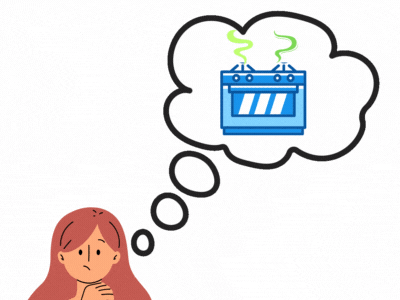
Going back home will make her late for work, but she needs to know.
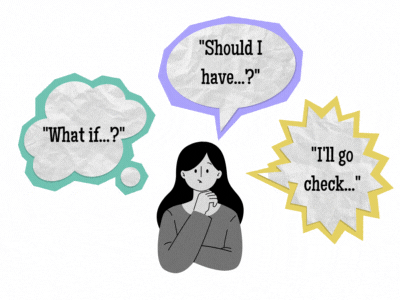
This is all too familiar.
With the urge to double-check, her worry the apartment building will blow up because of her mistake, and the disruption to her routine, Ronnie's obsessive-compulsive disorder, or OCD, is flaring up.
Ronnie pauses at the front door, keys in hand. She takes a deep breath and remembers 4 coping strategies that have helped her manage OCD in the past.
Why is OCD hard to manage?

Obsessive-compulsive disorder, or OCD, causes a “vicious cycle” where recurrent thoughts — or obsessions — create so much distress that a person feels pressured to respond with specific actions known as compulsions.
 Ronnie's fear of harming people by leaving the gas on is a typical example of an obsessive thought.
Ronnie's fear of harming people by leaving the gas on is a typical example of an obsessive thought.
Other examples include:
Worrying about a theft happening because you didn't lock the door.
Seeing yourself crashing your bike into pedestrians.
Panicking that you spread your cold to others by touching a doorknob.
Compulsive behaviors could also look like:
Frequently sanitizing hands until your skin is irritated.
Counting things like cars until a specific, safe number passes by.
Repeating a phrase, mantra, or prayer before doing a task.
 By going back again and again to look at the stove, Ronnie displays a common OCD “checking” compulsion.
By going back again and again to look at the stove, Ronnie displays a common OCD “checking” compulsion.
Quiz: Is it OCD?
 Which of these thought-and-action pairs could be symptoms of OCD? Choose all that apply.
Which of these thought-and-action pairs could be symptoms of OCD? Choose all that apply.

Thought: I am contaminated after shaking hands with someone.
Action: I apply hand sanitizer, then use an alcohol wipe, and then wash my hands three times with soap and hot water.

Thought: I like a well-organized, nicely decorated office space.
Action: I buy a box of multi-colored file folders and re-organize my important papers in them.
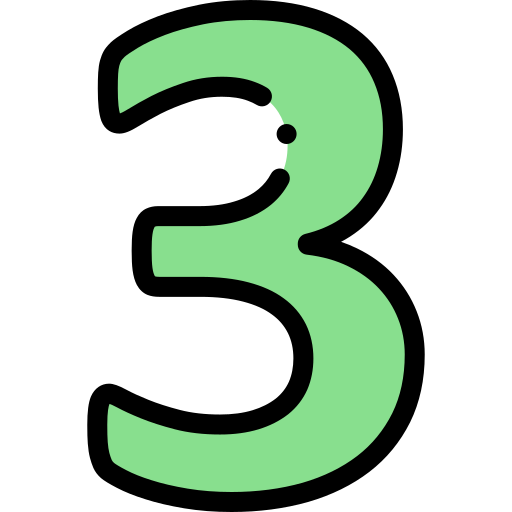
Thought: If I accidentally left the faucet running, I will flood my downstairs neighbor’s apartment.
Action: I go back and check that I turned off the tap, even though I just looked a minute ago.

Thought: It’s possible I could lose control of my car and crash into a school bus.
Action: I won’t drive to work until I know ten school buses have gone safely past my house.
Quiz
Which of the above thought-action pairs sound like OCD? Select all that apply.
Strategy 1: Try a Delay Tactic

It's difficult to manage OCD without support. If you feel your symptoms are changing or getting worse, reach out to your therapist or doctor as a first step. They may recommend therapy or medication to help manage symptoms.
In addition to your doctor or therapist's instructions, a strategy you might try on your own is exposure and ritual/response delay, or ERD.
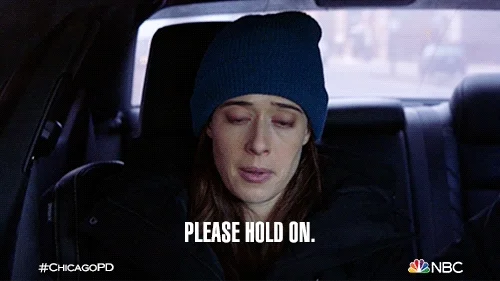
The ERD technique requires you to pause for a short, specific amount of time before performing the compulsive action or behavior. Over time, you increase the delay, until eventually you can wait so long that the compulsion passes.
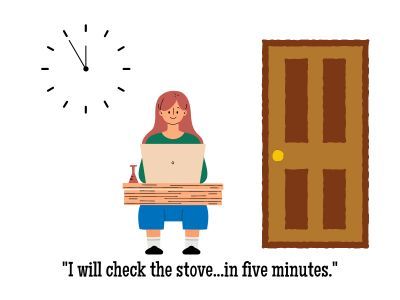
Ronnie seems to be trying ERD when she pauses before going back inside to check her oven again. Today, she might only be able to delay for a minute, but if she can wait three minutes next time, then five, then ten, she is slowly taking power away from her compulsion.
Strategy 2: Write It Out
Many people use journaling to cope with anxiety and other mental illnesses. It can help those living with OCD, too.
 Set up a journal just for tracking your OCD symptoms. You might create columns that capture triggering situations, the issue (or obsession) that arose, and what action you took as a resolution (the compulsion).
Set up a journal just for tracking your OCD symptoms. You might create columns that capture triggering situations, the issue (or obsession) that arose, and what action you took as a resolution (the compulsion).
A page from Ronnie's OCD journal might look like this:
When you feel comfortable, go back and review the journal details. Then, answer three questions that could help you take a different perspective on the doubts that OCD brings to mind:

Why did this situation trigger my OCD?
What would've happened if I hadn't performed my resolution?
What evidence is there that my fear would actually come true?
Ronnie's answers to these questions show how they help her think about her fears differently and gain some control over her OCD responses:
Strategy 3: Redirect That Reassurance
When Ronnie wanted to ask her roommate if he smelled gas, she was displaying the common OCD compulsion called "reassurance seeking."
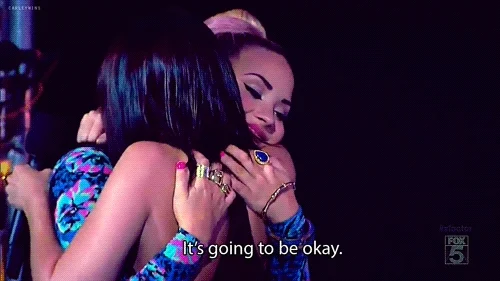
Someone with OCD might repeatedly ask another person to confirm that everything is okay as a way to temporarily relieve their anxiety.
But this can cause a “vicious reassurance cycle” when the short-term relief only “increases the urge to seek reassurance repeatedly when anxiety or obsessive thinking returns”.
 Ronnie's roommate has learned that when she comes to him for reassurance, he can better support her by saying something like:
Ronnie's roommate has learned that when she comes to him for reassurance, he can better support her by saying something like:
To avoid the vicious reassurance cycle, speak to a trusted friend about other ways to show support during an OCD flare-up. Ask your friend for suggestions that enable you to manage your anxiety and stress instead.

Strategy 4: Find Encouragement Online
 Photo by bruce mars on Unsplash
Photo by bruce mars on UnsplashThere are many reliable resources online that can give people living with OCD more information and help them connect with a supportive community when symptoms arise:
 Check out The OCD Stories and OCD and Anxiety channels on YouTube for videos about the disorder.
Check out The OCD Stories and OCD and Anxiety channels on YouTube for videos about the disorder.
 Join an online OCD community, such as Obsessive-Compulsive Disorder (OCD) Forum or The Mighty's OCD Community portal.
Join an online OCD community, such as Obsessive-Compulsive Disorder (OCD) Forum or The Mighty's OCD Community portal.
 Photo by Studio Republic on Unsplash
Photo by Studio Republic on UnsplashSeek websites published by expert mental health organizations, like:
Quiz
What are some reliable sources of support for your OCD symptoms? Select all that apply.
Take Action
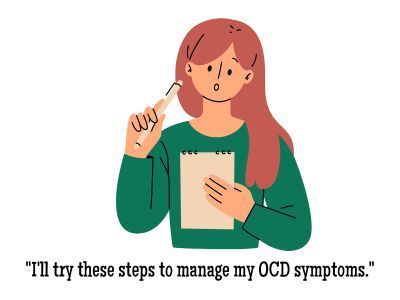
If you feel your OCD symptoms starting to flare up, try these strategies to help you manage OCD:
Your feedback matters to us.
This Byte helped me better understand the topic.
